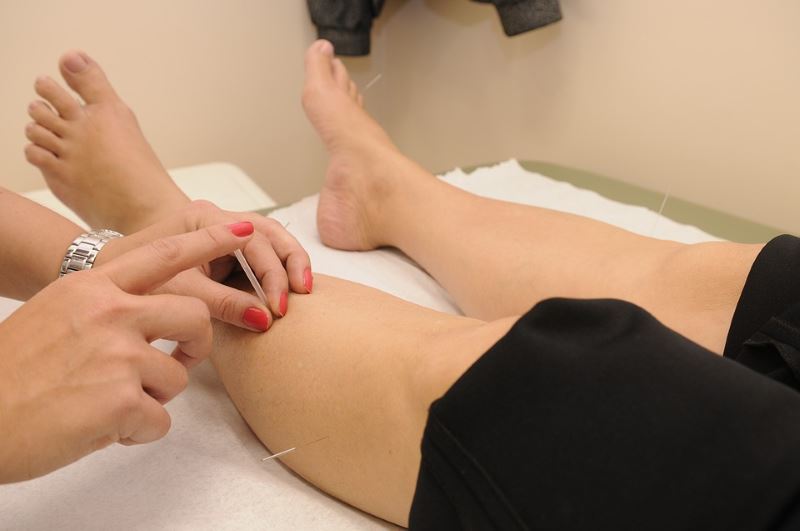Shoulders
Do you lie awake at night with an aching shoulder? Do you feel sharp grabs of pain while reaching up into the cupboard or into the back seat of your car? Did your shoulder pain start one day without any injury that you can remember? Shoulder pain can keep us awake at night and limit our day-to-day activities – even the most basic ones like washing our hair or getting dressed. In this article we are going to talk about how shoulder problems can start and what there is to do about it.
First let’s talk about what is inside your shoulder. The shoulder is what we call a ‘ball and socket’ joint. This means that the top of the upper arm bone has a ‘ball’ like surface, and this ball connects with the concave surface of the shoulder blade, similar to a golf ball sitting on a tee. This type of joint (like your hip joint) is build for maximum mobility. Having so much mobility is a good thing because it allows our shoulder and arm to reach in all different directions. However, this excess mobility can also predispose the shoulder to injury.
Almost everyone has heard of the rotator cuff. The rotator cuff is a group of 4 muscles responsible for protecting the shoulder. These are often the muscles that are injured in the shoulder because they can become pinched inside the joint (referred to as ‘impingement’). The rotator cuff muscles work alongside the muscles of your shoulder blade to ensure that the ball is always positioned in the centre of the socket so as to avoid pinching, inflammation and pain. Impingement can occur if any of these shoulder muscles become tight or weak or if the neck and upper back are too stiff to allow for proper arm movement.
People that spend a large portion of their days sitting often become very weak in their shoulder blade muscles while at the same time also becoming tight in their chest, upper back and neck. Others spend a lot of their workday doing repetitive movements with their arm that also can create irritation and muscle imbalances in the shoulder. At night many of us tend to lay on our ‘favourite’ side while sleeping which squeezes the blood out of the shoulder thus causing further irritation and preventing recovery from the strain during the day.
If you start to have shoulder pain the best strategy is to avoid the movement that is creating the pain and to ice the shoulder for 15 minutes 2-3 times per day for the initial 3 days (after 3 days switch to heat for 20 mins, 2-3 times per day to increase blood flow/healing). Make sure to continue to move the shoulder in motions that don’t hurt in order to prevent your shoulder from getting stiff. Also try as best as you can to not sleep on the painful shoulder at night in order to allow healing.
If the pain does not subside within a week it is advisable to see your health care professional so that the specific reason for the shoulder pain can be diagnosed. In physiotherapy, pain control and stretching out tight muscles are usually the initial goals. Treatment then fairly quickly progresses to focusing on strengthening specific muscles as well as increasing overall flexibility. Often the conversation of prevention will focus on daily stretching or Yoga as well as emphasizing good posture while sitting.
I hope that you have learned a little bit about how the shoulder works and what can cause shoulder pain. If you are starting to have nagging shoulder pain or tightness, remember that it is much easier to deal now then ‘down the road’. Happy spring (summer) everyone!
Graham Gillies is a registered Physiotherapist at Sun City Physiotherapy Winfield and is a fellow of the Canadian Academy of Manipulative Therapy and a certified Gunn IMS and acupuncture practitioner.
Physio Articles
The phrase “no pain, no gain” would probably be the leading misconception about pain that I hear – live by this slogan at your own risk. Why? Because first and foremost, pain is a protector. Pain is a wonderful and fascinating perception that helps to keep us out of danger. I can certainly sympathise that when you’re experiencing persistent or intense pain, its hard to see it as “wonderful” or “fascinating” but it truly is a remarkable defence mechanism that we possess.
When you step on a nail, twist your knee or tweak your back, what comes to your defence first? The simple answer is pain. It’s your first warning of actual or even potential tissue damage. Yes, that’s correct – “potential” tissue damage, meaning your body is smart enough to tell you to withdraw from danger before the damage is done. Wow! When tissue damage does occur, such as a strained ligament, tendon or muscle, your body sends all its best healing products to the area in the form of ‘inflammation’. The brilliance of inflammation is that it increases the sensitivity of the danger detectors (receptors) in the damaged area, which send more danger messages to the brain where they are processed and a pain experience can result. What do you think of that? Essentially, your body doesn’t just heal you with inflammation but it also tells you about it through the feeling of pain as a way of changing your behavior, allowing the area to rest and heal more effectively.
If you understand that the experience of pain is a critical response when the body feels threatened or in danger, then you will see how the slogan “no pain, no gain” will quickly lead you astray. Instead, us ‘pain geeks’ like to encourage the slogan – “know pain or no gain”, meaning that if you understand why you are experiencing pain and what it means, you are more likely to adopt the appropriate behaviour to encourage recovery.
The story of pain can get rather complex but equally as fascinating. Like any of our body systems, our defence systems can sometimes get a bit carried away and malfunction. This is often the case in the event of persistent pain – a story that will have to wait for another time. Until then, remember “know pain or no gain”.
Hips and Knees, Physio Articles
Hip osteoarthritis is a common condition that involves the degeneration of the articular cartilage of the hip joint. If you have this condition and are noticing an increase in pain and a decrease in physical function you may be wondering what treatment options are available to you.
With osteoarthritis of the hip you may feel a constant ache localized to the groin and side of your hip and sometimes extending into the front of your thigh and knee. The hip often feels stiff, especially first thing in the morning when you get out of bed and it can make activities of daily living much more painful including standing, walking and stairs. It can also make it difficult to put your socks on, get into and out of your car and even get on and off of the toilet.
Stiffness, pain and having difficulty with many previously easy daily activities may lead you to want to do less physical activity. The trouble is, not moving will often lead to weakness, further stiffness and general deconditioning.
A physiotherapist can help design a treatment program with a focus on decreasing pain, increasing range of motion and flexibility, improving core stability, gaining muscle strength and endurance and improving general conditioning. Other functional goals often include improving walking pattern, speed and distance, ability to go up and down stairs without pain and better control going from sit to stand.
This is often accomplished through a combination of education, manual therapy and exercise. An exercise program is often extremely beneficial to help improve physical function and decrease pain. A physiotherapist is an excellent resource to put together a safe and effective home exercise program for you to perform daily at home or at your local gym. Also, if you enjoy swimming, bring this up with your physiotherapist as aquatic exercise is a great form of treatment for hip osteoarthritis.
Other possible physiotherapy treatments that may be effective for some individuals with arthritis of the hip include: acupuncture, massage, heat on the muscles around the hip, ice, TENS, supportive footwear and/or a gait aid such as a cane or walking poles. It is important to talk with your doctor about your arthritis to discuss other treatments that may be beneficial to help manage your symptoms. Certain medications may be helpful, but it is important to bring this up with your doctor to be sure they are appropriate for you. Also, if you are overweight, a weight management program can be extremely beneficial to decrease the stress on your joints. Since nutrition plays a crucial role in weight management, it is important to have this discussion with your doctor.
A small portion of individuals with hip osteoarthritis will eventually opt to have a total hip replacement. This is often the case when symptoms are progressively getting worse and significantly limiting activities of daily living. If you have had a total hip replacement a physiotherapist guided post-operative hip strengthening program is ideal in order to decrease pain, improve your hip function and return to your active lifestyle.


